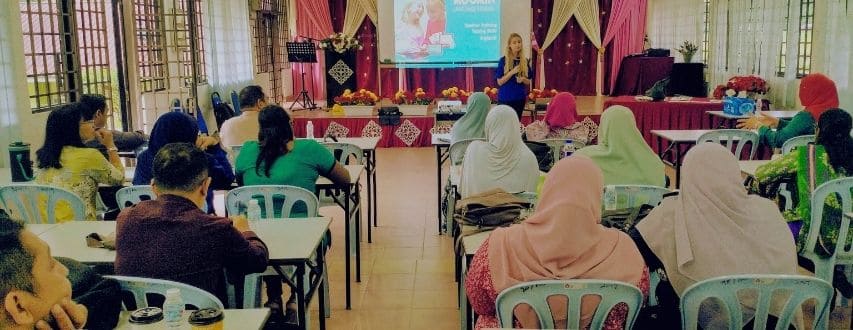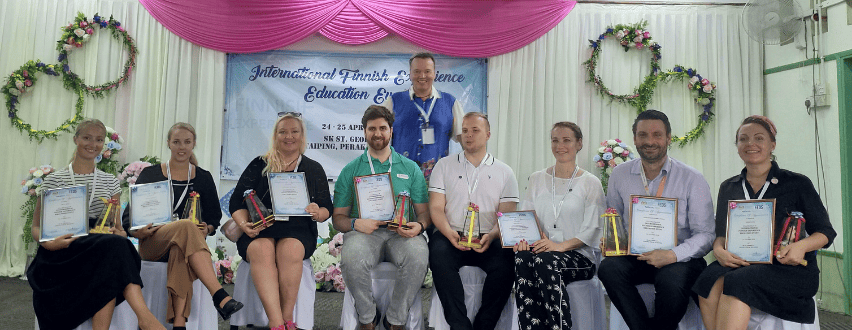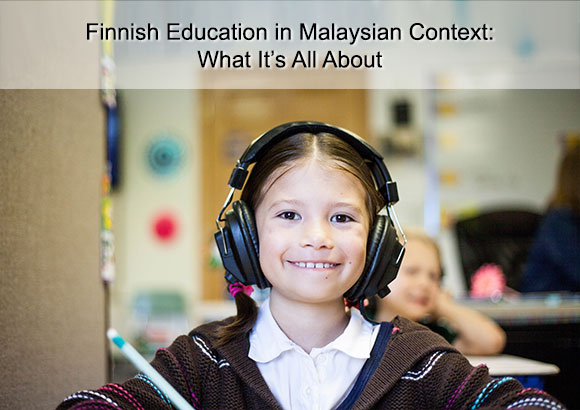Finnish Education In A Malaysian Context : What All It Is About
 Schooladvisor Team
Schooladvisor TeamFinnish Education In A Malaysian Context : What All It Is About

In Finland only 10% of the applicants are selected to be teachers whereas in Malaysia recruitment for teachers are not selective.
Finnish education has made headways for being one of the highest ranked by the PISA (Programme of International School Assessment) in the 2000s. Nevertheless, in the last PISA report, Finland remains top 10 in the world. At the same time, there are many interesting facts concerning Finnish education and its benefits. We have decided to speak to Finnish Education Sdn Bhd founder Petri Karjalainen on the essence of Finnish education. Below is an insight into what Finnish education is all about .
What do you think about Finnish education being one of the highest ranked in the world?
In my view, Finnish education never aspired to be the best. To articulate better on the education practice in Finland, allow me to explain my perspective on the structure of education in my country.
The role of teachers in Finland is highly coveted. The entry requirement for a teacher is a Masters degree in education and pedagogy studies. However, the selection process of a teacher is not gauged entirely on merits. There are tests on certain aspects of emotional intelligence and creativity. In addition to that, the enrolment allocation for teachers per year is only 10%. University placement to be a teacher is exceptionally competitive. Therefore, being a teacher in Finnish society is highly respected due to the stringent selection process.
Finnish society places enormous trust in teachers. They do not undergo a review system during their employment due to the rigorous recruiting process at the initial stage. This is contrary to some countries, such as the United States, the United Kingdom and Canada, where a teacher’s licence is required to teach in a school.
How is the Finnish model applied in a general context?
The core principle of Finnish education is to be independent. This thought process is the core aim of development in our teaching models. The education system in Finland focuses on curriculum methods and development. Hence, the learning is personalised for every child. For instance, for certain children, their learning style may need more attention, be it physical or mental. A child would go through a three-phased approach. The first approach is observation and identification. The second approach, which needs a specialist, would be identification, and the third is intervention. The critical aspect of the Finnish model is that a teacher will always be present to lead a child’s engagement to ensure they learn consistently.
With that in mind, the teaching position in Finland is autonomous. Teachers can participate in the reviewing process of education at the national level. The education system in Finland undergoes a review every ten year.
A personal observation I can share is when I was attending school, the introduction of a second language began at age 9. In contrast, now it is at the age of 6. This is one of the few remarkable changes that the teachers in our education system have carried out. The Finnish education system in schools is not commercialized and is free for all Finnish citizens since the vision of schools is to promote learning.
Now that we understand the Finnish education model, how would this model apply to the local context in Malaysia?
Malaysia’s local schooling system operates in Malay. Nevertheless, schools also use Mandarin, Tamil and English as the language of instruction. So, there are a number of medium of instruction operating in Malaysia.
However, not many are aware that in Finland, although our official languages are Finnish and Swedish. In addition, in the most northern part of the country we recognize minority languages such as Russian and a few others. In addition to that there are various unofficial minority languages and some schools may host up to half of the students whose native language is other than Finnish or Swedish. Therefore, some students are non-native to the Finnish official languages, and this is where our language teaching methods are applied.
A pilot project was conducted in a school in Perak from January to November 2018 to apply our Finnish concept to teach foreign language. This project was aimed at introducing the Moomin Language Concept, which is one of the current Finnish methods for early learning of foreign languages. This project had students participating from the age of 6 to 7. The ensuing results showed an efficacy of 18% increase in the student’s learning progress. This project showcases the effectiveness of applying the Finnish model in a local context. This pilot project was further expanded and currently has 2,000 kids in Perak enrolled in this project.

You are so passionate about education. Could you elaborate more about your experience, especially your views on education?
My experience has fundamentally been to solve problems, especially with the use of software. My experience has ranged from various areas such as public relations to software and technology.
My take on Finnish education is to promote the philosophy of constant learning. In this world, where we work alongside technology, the mindset to want to learn is essential. I want to help by constantly developing the learning experience so that it would be an exciting path to a complete education.
---------------------------------------------------------------------------
Education is one of the cornerstones of the Finnish welfare society. We pride ourselves on an educational system that offers equal opportunities for education for all. Education from pre-primary to higher education is free of charge in Finland. Finnish teachers are highly educated and strongly committed to their work.
Recent Articles
- What Should You Be Looking for in a Preschool?
- HELP Education Group Unveils New Sports Oval in Subang 2 Campus
- Exploring the Homeschooling Path: What Parents Need to Know Before Taking the Leap
- More Parents Are Now Opting for International Schools in Malaysia
- AISM Students Who Dream Big and Build Bigger

